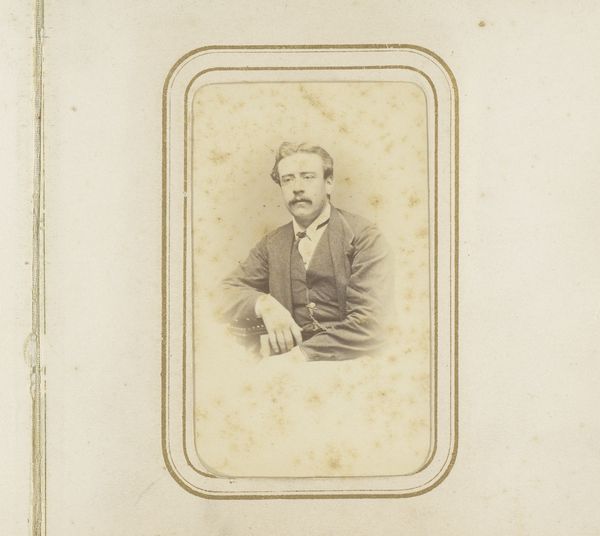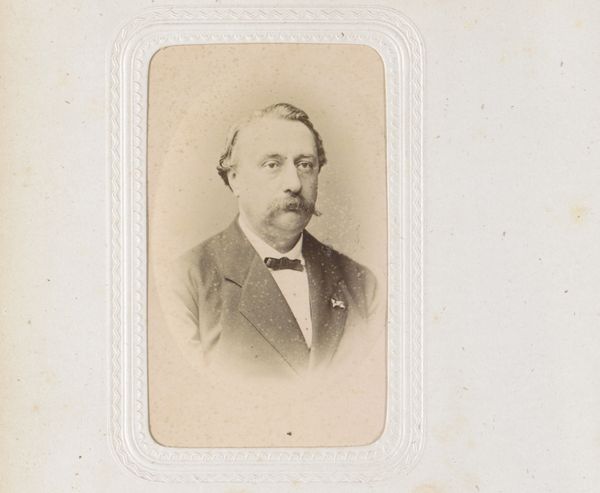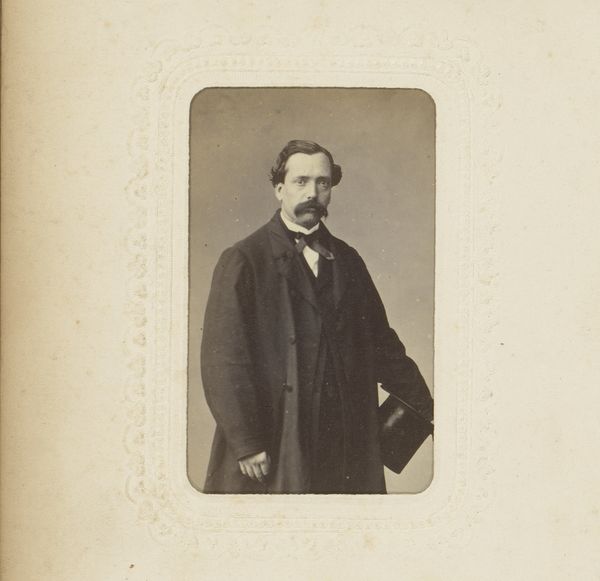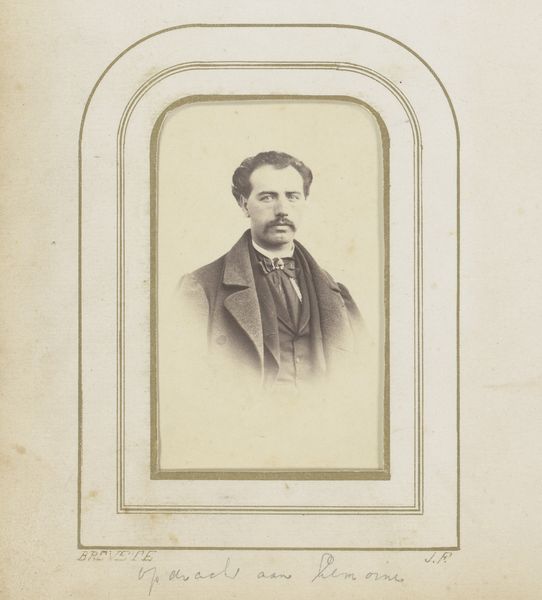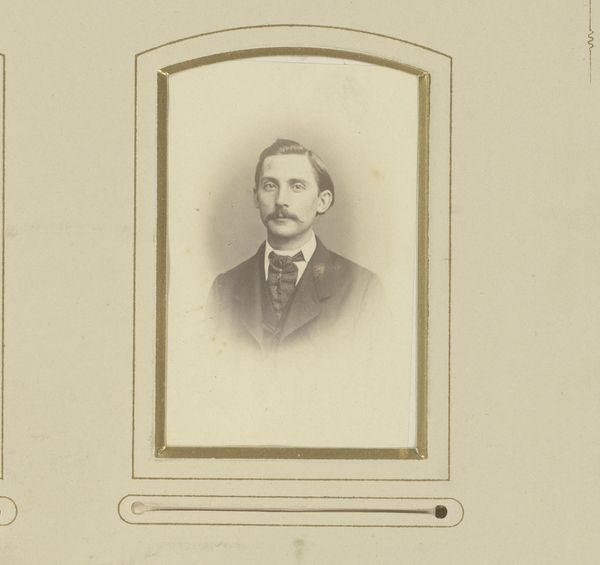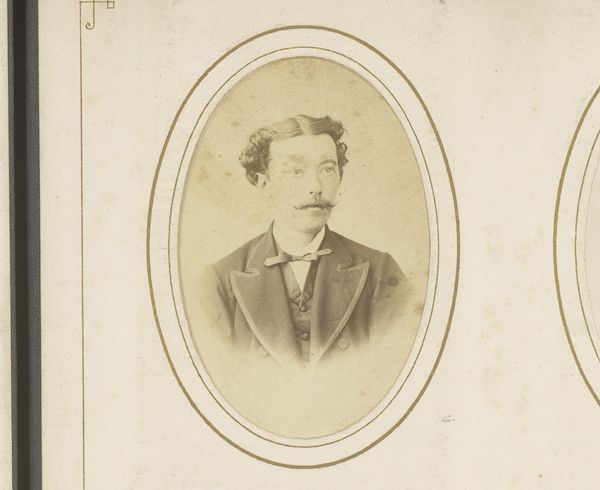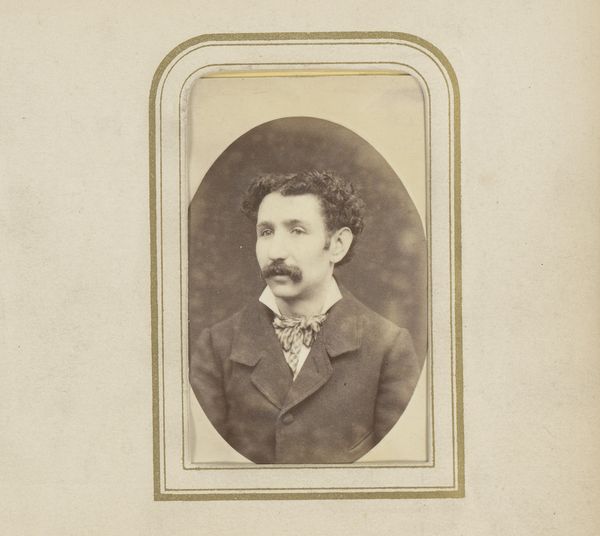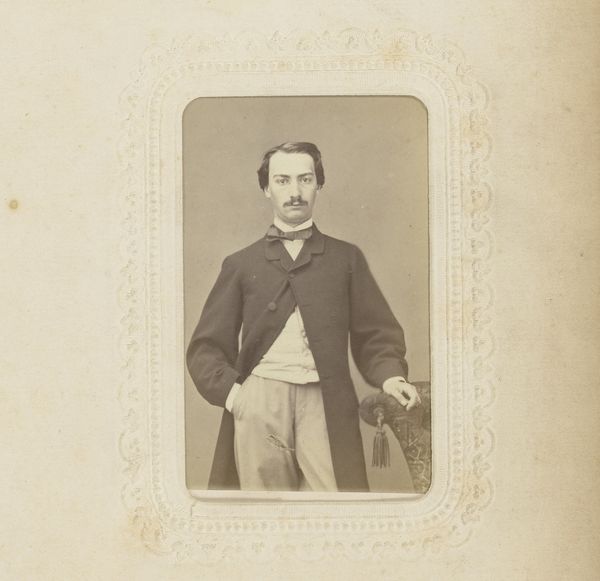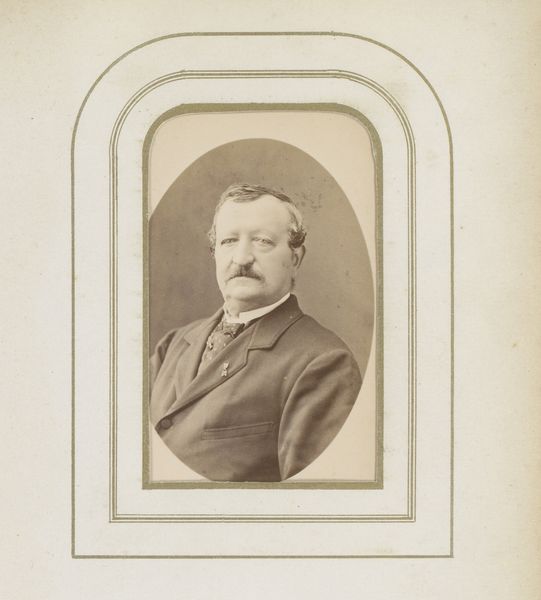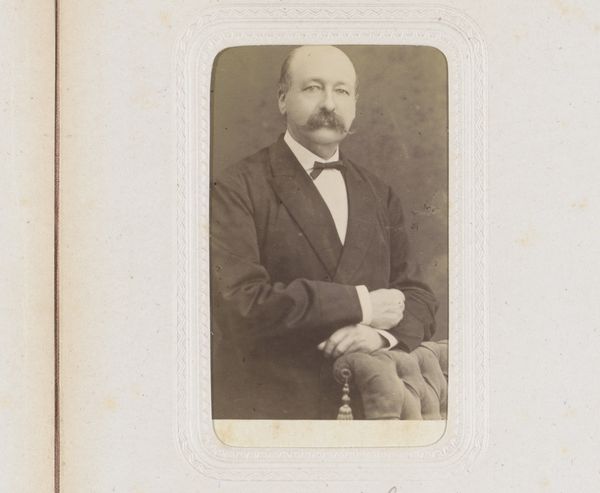
photography, gelatin-silver-print
#
portrait
#
photography
#
historical photography
#
gelatin-silver-print
#
19th century
Dimensions: height 83 mm, width 51 mm
Copyright: Rijks Museum: Open Domain
This photograph of a moustached man was made by Eugene Guérin using a technique known as ‘carte de visite’. These small portraits, popular in the mid-19th century, were made possible by innovations in photographic chemistry and printing. The collodion process allowed for multiple exposures on a single glass plate, which meant that many prints could be made cheaply. This was crucial: the carte de visite was all about mass production. Consider the sheer volume of these images that were made, as photography became democratized: a booming industry arose around their production and distribution. This had social ramifications as well. Photography was no longer exclusively for the wealthy elite, but a relatively accessible means of documenting one's image, like this man. In this light, photography can be understood as a craft, deeply embedded in the social and economic changes of its time.
Comments
No comments
Be the first to comment and join the conversation on the ultimate creative platform.
